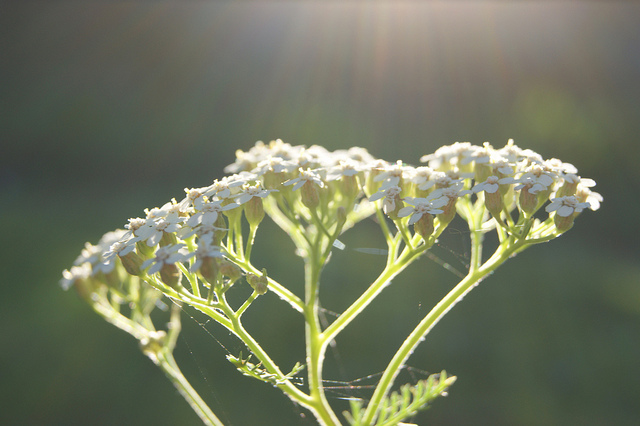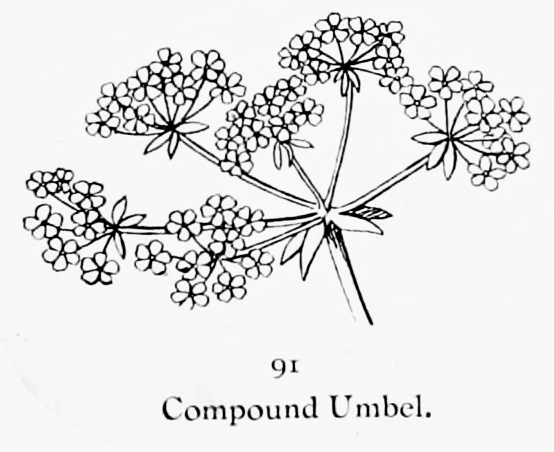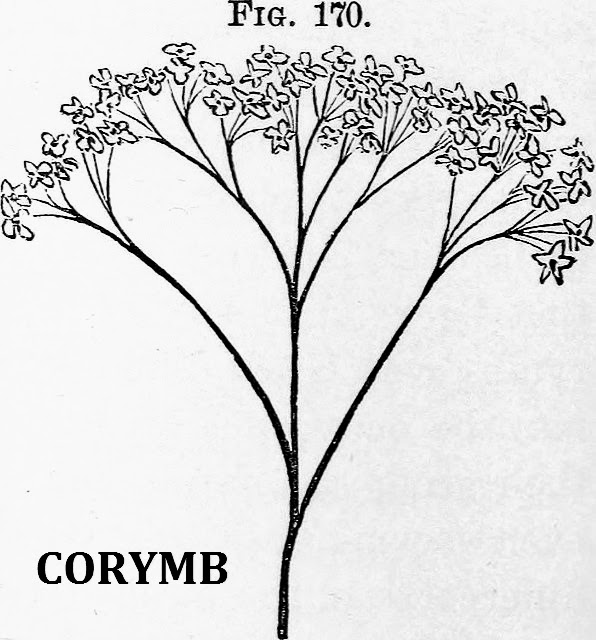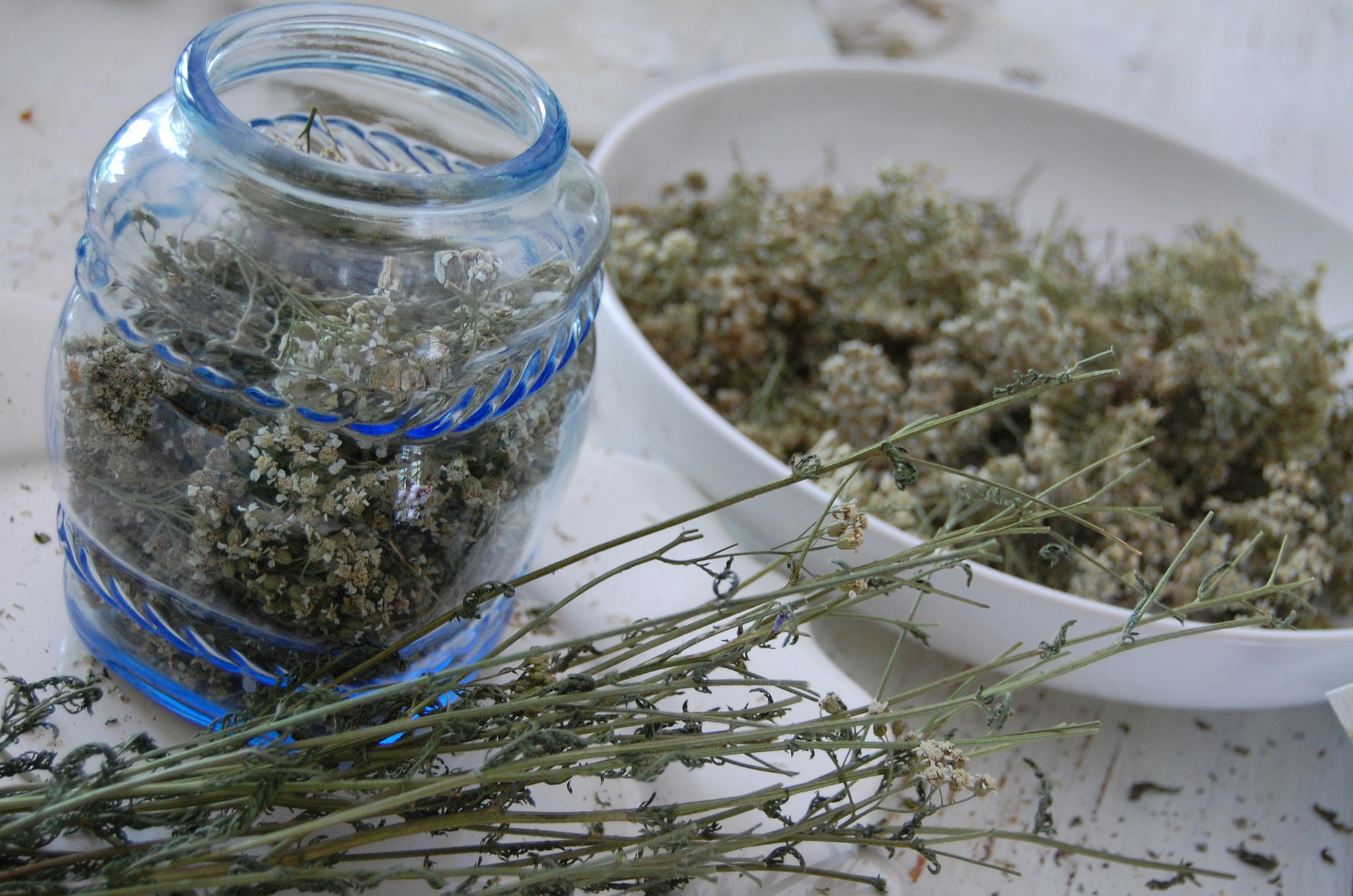Yarrow: An Herb for What Ails Ya
Prefer to listen to this article? No problem! Four Season Foraging now offers free audio versions of articles with the help of a text-to-speech website. Simply click the play button on the right!
It is no understatement when I say that yarrow (Achillea millefolium) is one of my all-time favorite herbs. Over the years, I've used it for many purposes: healing wounds, fighting infections, breaking fevers, aiding digestion, easing painful menstruation, and more. It's a common plant that's easy to find in rural and urban environments-- a gift of healing that's free for the picking!
Habitat and Distribution
Yarrow grows in every state of the US and every province in Canada. According to the Natural Resources Conservation Service Plants Database, there are 12 subspecies that grow across the US and Canada. Most of them are native, but one, Achillea millefolium var. millefolium, is considered introduced. However, there is always debate where taxonomy is concerned, and some consider yarrow to be a single, variable species. Regardless of the specifics, all variations that grow wild are used the same medicinally.
Yarrow grows best in open, sunny areas such as lawns, fields, and meadows. However, it will also grow in the partial shade of open woods, roadsides, and trailsides. It can be found in cities, suburbs, rural areas, and wilderness areas. It has become a popular landscaping plant, hybridized to produce yellow, orange, pink, and purple flowers. I recommend sticking to the white-flowering yarrow when harvesting for medicinal purposes. It is unclear whether the medicinal properties are consistent throughout hybrid varieties.





Identification
When yarrow first emerges from the ground, it produces a basal rosette of fluffy, fern-like leaves. These distinctive leaves have spawned many names for the plant: squirrel tail, thousand-leaf, plumajillo (Spanish for little-feather), and millefolium (Latin for thousand-leaf.) With a bit of practice, it becomes quite easy to identify yarrow by the leaves alone. They are narrow, long, and finely divided. They can grow up to 6 inches long and 1 inch across, though often they are much smaller than that. The leaves and/or stem are often, but not always, covered in fine hairs.
Yarrow typically flowers from June to September in the Twin Cities area. The entire plant reaches heights of one to three feet. The flowers grow in flat clusters at the top of the stem. Each flower is tiny, about 1/4" across, and has four to six white ray flowers. (Ray flowers are commonly called petals, but technically they are different.) They may show a blush of pink or yellow, but if the color is bright yellow, pink, orange, or anything else that isn't whitish, it probably shouldn't be used medicinally.
Look Alikes


Yarrow looks vaguely similar to some members of the carrot family, but a closer look will quickly reveal the differences. Many carrot family plants have fern-like leaves, but those of yarrow are typically more finely divided. Also, yarrow leaves are long and narrow, like a feather. Plants like wild carrot (Daucus carota), sweet fennel (Foeniculum vulgare), and poison hemlock (Conium maculatum) have fern-like leaves, but they have a broad, triangular outline.
Additionally, flowering tops of carrot family plants may look superficially similar. However, all plants in the carrot family have compound umbels. This means that the stems of the flower cluster radiate out from one single point on the main stem. Each little stem ends in another branching of even smaller stems radiating from one point. Single flowers appear at the end of each smaller stem. In yarrow, however, the flower stems stagger off the main stem along various points, but end at approximately the same spot to create a relatively flat-topped flowerhead called a corymb.
Harvesting Yarrow
cc chaumurky / Flickr / CC BY-NC 2.0
According to ancient traditions, yarrow reaches its peak of power on the summer solstice and should be harvested then. However, if you prefer to harvest it throughout the summer, just be sure you're picking at the height of flowering. The plant should look healthy, with the flowers completely or mostly open. It's okay if the lower leaves are dying back, but the upper leaves and blossoms should appear fresh. When making teas and tinctures to be taken internally, typically the flowering tops (leaves, stems, and flowers) are used. For salves, ointments, or other topical uses, typically the leaves alone are used.
I've read that yarrow growing in rocky, sandy soil is medicinally stronger than yarrow growing in rich soil. In my experience, I've found this to be true. All yarrow has bitter and aromatic compounds, but it seems to concentrate in dry soil. Usually I can handle the flavor when nibbling on leaves, but I've picked it off rocky bluffs and spit it out because it was overwhelming!
Medicinal Uses
Healing Wounds
Yarrow is perhaps best known for its application in treating wounds. In fact, the Latin name Achillea alludes to this usage; it comes from the ancient Greek myth of Achilles, who fought in the Trojan War and was made (nearly) invincible by his mother, who dipped him in the River Styx at birth. He used yarrow to heal his soldiers wounded in battle, but it wasn't enough to save him when an arrow pierced his heel-- the one part of his body that wasn't submerged in the river. Hence the phrase "Achilles' heel." Some of yarrow's other common names also allude to its wound-healing capabilities: woundwort, bloodwort, herb militaris.
Yarrow is often added to salves, ointments, and other skin creams designed to promote healing. However, it works just as well in the field. Simply tear off a chunk of the leaf and stick it onto the wound. You'll be amazed at how quickly it staunches bleeding! For more serious wounds, crush up the yarrow leaf with water, if you have it. Oftentimes people will chew it up and paste it on, but that's actually not recommended due to the bacteria in saliva. Yarrow is strongly antibacterial, but it's better not to introduce additional bacteria into a wound. The antibacterial properties plus the powerful astringency promote rapid healing.
Fighting Illness
Yarrow's antibacterial properties extend to internal ailments, as well. A strong tea drank cold will help flush out urinary tract infections. Drinking the tea hot and bundling up in blankets will promote sweating and break a fever. It also fights colds, flu, coughs, and sore throats. Its antibacterial and astringent qualities make it a perfect remedy for diarrhea.
For many years now I have made sure to prepare yarrow tincture in advance of winter and the accompanying cold and flu season. It has always been a dependable remedy for me in times of illness. I've lost track of the number of times I've gone to bed sick with fever, sore throat, coughing, and sneezing, dosed myself with yarrow, and woken up well and refreshed (after a miserable night of boiling and sweating, it must be added.) But hey, it works!
Menstrual Problems
Unfortunately I am one of those people who suffers from painful menstruation, at the worst of times leaving me bed-ridden, nauseous, and debilitated with pain. Fortunately yarrow (and other useful herbs!) are a source of comfort during those times of struggle. Yarrow contains compounds that mimic hormones and help regulate the menstrual cycle. It also reduces heavy bleeding and relieves cramps. As a bitter tonic, it soothes the stomach and aids digestion, which can be very useful before and during menstruation. As a diuretic, it helps fight the bloating so often associated with troubled menstrual cycles. Finally, yarrow acts as a nervine as well, calming the nervous system and easing anxiety and tension.
Digestive Aid & Blood Tonic
As a bitter herb, yarrow promotes healthy functioning of the digestive system, toning the stomach and intestines, and stimulating the liver. It increases appetite and enhances absorption.
Yarrow also functions as a circulatory tonic, reducing blood pressure and treating thrombosis.
Safety Note
As with any new plant, when first consuming yarrow, try just a little bit, and wait a day for allergic reactions to appear. Some people do experience skin irritations or light sensitivity.
Yarrow is generally considered safe, but due to its stimulating action on the uterus, it is recommended to avoid ingesting yarrow when pregnant.
Parting Words
With this medicinal panacea growing wild all over the country, I highly recommend giving it a try! In my opinion, it's an herb that should be in every first aid kit. In case you haven't guessed, I'm not a medical professional, and some wounds or illnesses are definitely best treated by experts. However, if you find yourself reaching for some over-the-counter drugs to treat a cut, or a fever, or some cramps, maybe next time you could try reaching for yarrow instead! In my experience, it works just as well or better. But don't take my word for it!
Join Us on Patreon!
If you like our foraging tutorials, please consider joining us on Patreon! It’s a simple way for you to help Four Season Foraging keep producing the informative content that you enjoy.

